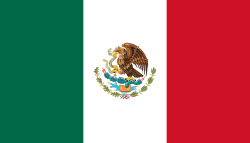Executive Secretary

9th International Symposium on Psychology and Human Development 2025
PSICOLOGÍA 2025
Art and psychology have maintained a symbiotic relationship through the oneiric, which acts as a bridge between the tangible and the abstract (Jung, 1964; Freud, 1899). However, the analytical approach of science still dominates, marginalizing the emotional and limiting a comprehensive understanding of consciousness. By critically analyzing the cerebral dichotomy (analytical vs. emotional), seven primary consciousnesses are identified (waking, oneiric, lucid oneiric, spiritual, entita, divine, and omniscient) as the foundation for a new artistic and human epistemology. The study integrates psychoanalytic approaches (Freud, Jung, Lacan), cognitive theories (Piaget, Vygotsky), and transhumanist perspectives (Bostrom, Haraway), proposing the artist as a 'contemporary shaman' capable of anticipating scientific and technological visions. The author’s autoethnography as an artist-shaman (Ollincóatl) offers a unique perspective to integrate ancestral knowledge and modern science, aligned with the 'epistemologies of the South' (Santos, 2018), while proposing a fundamental reexamination of the concepts of technology and transhumanism.
El arte y la psicología han mantenido una relación simbiótica a partir de lo onírico, el cual actúa como puente entre lo tangible y lo abstracto (Jung, 1964; Freud, 1899). Sin embargo, aún predomina el enfoque analítico de la ciencia, relegando lo emocional y limitando la comprensión integral de la consciencia. Entonces, al realizar un análisis crítico de la dicotomía cerebral (analítico vs. emocional), se identifican siete consciencias principales (vigilia, onírica, lúcida onírica, espiritual, entita, divina y omnisciente) como base para una nueva epistemología artística y humana. El estudio integra enfoques psicoanalíticos (Freud, Jung, Lacan), teorías cognitivas (Piaget, Vygotsky) y perspectivas transhumanistas (Bostrom, Haraway), proponiendo al artista como un "chamán contemporáneo" capaz de anticipar visiones científicas y tecnológicas. La autoetnografía del autor como artista-chamán (Ollincóatl) ofrece una perspectiva única para integrar saberes ancestrales y ciencia actual, en línea con la "epistemología del sur" (Santos, 2018), proponiendo una revisión primaria del concepto de tecnología y transhumanismo.
About The Speaker

Dtora. Mauricio Colin Castillo

Mauricio Colin Castillo (CDMX, 1973). Artista y chamán de la tradición Mexica Toltecáyotl. Es Licenciado en Artes Plásticas por parte del Instituto Nacional de Bellas Artes, México; del campus Escuela Nacional de Pintura, Escultura y Grabado, La Esmeralda, incluyendo estudios en Centro Multimedia del Centro Nacional de las Artes. Dirige las iniciativas PRACÓ Producción Arte Contemporáneo y Ecomuseo Arte Contemporáneo Eco MACQROO A.C. Durante su investigación de Maestría en Teoría Crítica desarrolló “El arte de la consciencia”, un cuerpo de trabajo donde se incluyen la “Dialéctica sobre las tecnologías de la consciencia”, el “Modelo Colin para la enseñanza/aprendizaje de las T.C.” y “Alegorías del shaman”. En dicha obra, establece y plantea vínculos entre los procesos de creación del artista con los actos sagrados del chamán. La tradición Mexica Toltecáyotl le reconoce como chamán abuelo nahual “Ollincóatl”, significa en el idioma Náhuatl "Serpiente moviéndose como agua vibrante". Desde el año 1991 ha recibido premios y distinciones nacionales e internacionales, realizando exhibiciones artísticas y desarrollando en paralelo su propuesta con actividades como ArtistaShaman, presentándose en naciones tales como Australia, Bolivia, Ecuador, Egipto, España, Guatemala, México, Perú, Suiza y Turquía.
Discussion